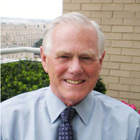 Last month, the Institute of Medicine (IOM) partnered with Blue Shield of California Foundation and the Patient Centered Outcomes Research Institute to bring together patient and family advisory council leaders from across the US. These organizations comprise a vibrant and growing resource for leadership and partnering on behalf of care that is patient centered, effective, efficient, and that continuously learns and improves.
Last month, the Institute of Medicine (IOM) partnered with Blue Shield of California Foundation and the Patient Centered Outcomes Research Institute to bring together patient and family advisory council leaders from across the US. These organizations comprise a vibrant and growing resource for leadership and partnering on behalf of care that is patient centered, effective, efficient, and that continuously learns and improves.
A diverse group of meeting panelists presented case studies of success from their own patient and family advisory councils, highlighting the power of these groups to improve not only patient satisfaction, but also health outcomes and hospitals’ bottom lines. For example, Bernard Roberson, administrative director of patient and family centered care at Georgia Regents Health System, said that through the work of his 200 patient advisors and the system’s embrace of patient and family centered care, Georgia Regents had achieved a 62% drop in medication errors and a 15% increase in discharges of neuroscience unit patients to long term care settings. One of the most important changes, Roberson said, was a schedule for bedside rounds tailored to patients’ needs that permitted families and caregivers to participate more regularly in the information sharing that occurs during rounds.
Already present at some level in 40% of hospitals nationwide, patient and family advisory groups are diverse in their methods and their membership, but united by a shared vision for a health system that engages patients in decisions on every aspect of care. An ongoing survey from the American Hospital Association’s Health Research Education Trust is one of the more methodologically rigorous attempts to assess the current landscape of patient and family groups within the healthcare system. Data collection for the survey is still underway, but early results indicate that 28% of institutions surveyed have a hospital wide patient and family advisory council, and that 52% of these councils have been in existence for more than two years.
A common thread in all of the success stories shared by presenters—many of which are available at iom.edu/networkingPFACs—is that these local leaders have a strong appetite for learning and collaboration, and they are seeking the development of a robust leadership learning network to accelerate the pace of progress. A rich set of observations was offered on how enhanced communication and coordination could be shaped to foster the establishment of active patient and family advisory capacities in healthcare facilities across the United States, promote partnerships, and to ensure that best practices are shared and replicated.
At the conclusion of the meeting, participants discussed a variety of follow-on activities that could aid in expanding and networking patient and family advisory groups across the nation. Next steps include:
- Building an inventory and contact database of existing councils.
- Establishing a means for regular communication.
- Developing an accessible description of the various models in play.
- Building the experience base of initiatives, successes, and false starts.
- Building the digital capacity for routine and immediate consultation among leaders on the front line.
- Documenting the impact of such groups on care improvement and efficiency.
- Developing the business case for the returns from the work of patient and family advisory groups.
Through these activities and more, the growing national network of patient and family advisory leaders can promote the vision, shared with the Institute of Medicine, for a continuously learning health system in which health professionals and system leaders are fully partnered with the people they serve, to achieve better care, lower cost, and a healthier nation.
I declare that I have read and understood the BMJ Group policy on declarations of interests and I have no relevant interests to declare.
J Michael McGinnis is a senior scholar and executive director of value and science driven healthcare at the Institute of Medicine, Washington DC.